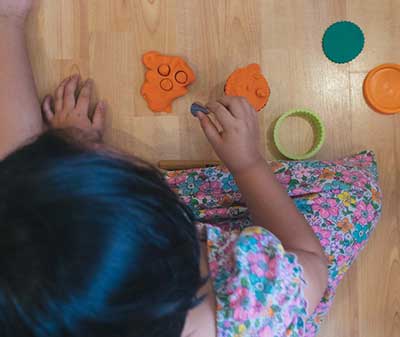
What is Applied Behavioural Analysis (ABA)?
While there may
be many treatments available for autism out there, with new alternative
treatments on the rise, the treatment that is evidence-based and thoroughly
research-based is Applied Behavioural Analysis (Lovaas, 1993).
ABA has been
endorsed by the US Surgeon General, the New York State Department of Health as
well as in the National Standards Project by the National Autism Center, USA
(Autism Speaks). There have been over 1000 journal articles
to support the efficacy of the ABA approach (Schrek & Miller, 2010) and 40 states in the USA have
state funding or insurance coverage for ABA treatment for children with autism (Autism Speaks).
Studies show
that almost 50% of children with autism who receive good quality intensive ABA
treatment at an early age are able to catch up to their typical age.
So how does ABA actually work? Well firstly, ABA is based
on the principles of operant conditioning, whereby consequences have an impact
on increasing or decreasing behaviour. This means that whatever behaviour we
reward (through attention or external/internal motivation) will increase. This
includes appropriate behaviours we do want to increase as well as inappropriate
behaviours that we may not want to increase.
For example,
- A child says “book” and gets
a cookie from his teacher. This is an appropriate behaviour of communication
and the reinforcement in this case will be the book the child requested for. In
this example, it is likely that the appropriate behaviour of using words to
communicate will increase. - However, in another example, a child says
“book” and the teacher say “No book” initially. The child starts to
scream and push the teacher. Then, the parents say “Okay fine, here
is the book!”. This is an example where the appropriate behaviour of
communicating through words was not reinforced but instead the inappropriate
behaviour of screaming and pushing was reinforced with the book. Therefore, it is likely that the inappropriate behaviour of screaming and pushing around will increase.
Secondly, it is important to note that ABA is not a
syllabus or a curriculum but more so, a teaching methodology. While there are
basic curriculums that trained ABA professionals know how to utilise, some
children with autism may not complete this curriculum, may need adaptations or
even individualised unique programmes. Over the last 10 years of our
experience, we find that the principles of ABA can be applied to all ages of
children and even adults, with or without autism.
The reason being that complex skills, be it language,
cooperation, academic skills, play skills, or even social skills, can be broken
down into its component parts. These component skills are then paired with
positive reinforcement. Initially, this positive reinforcement may be external
rewards that are individualised to the child’s preference with the purpose of
becoming internally rewarding. Then, it is critical that these component skills
have sufficient practice in order to become established skills over time and
environments.
So in summary, ABA principles boil down to:
- Breaking complex skills down to
their component part; - Pairing this with positive reinforcement; and
- Providing sufficient practice!
A closing reminder tip is that whatever behaviour you
give attention to will increase, both good and inappropriate behaviours.
Reference List
- 10 Years Of Progress: What We’ve Learned About Autism. (2016). Retrieved from https://www.autismspeaks.org/news/news-item/10-years-progress-what-we039ve-learned-about-autism
- Applied Behavioural Analysis (ABA). (2016). Retrieved from https://www.autismspeaks.org/what-autism/treatment/applied-behavior-analysis-aba
- Lovaas, O.I. (1993). The Development Of A Treatment-research Project For Developmentally Disabled and Autistic Children. Journal of Applied Behavioral Analysis, 26(4), 617-630.
- Schrek, K.A. & Miller, V.A. (2010). How To Behave Ethically In A World Of Fads. Behavioral Intentions, 25(4), 307-324.